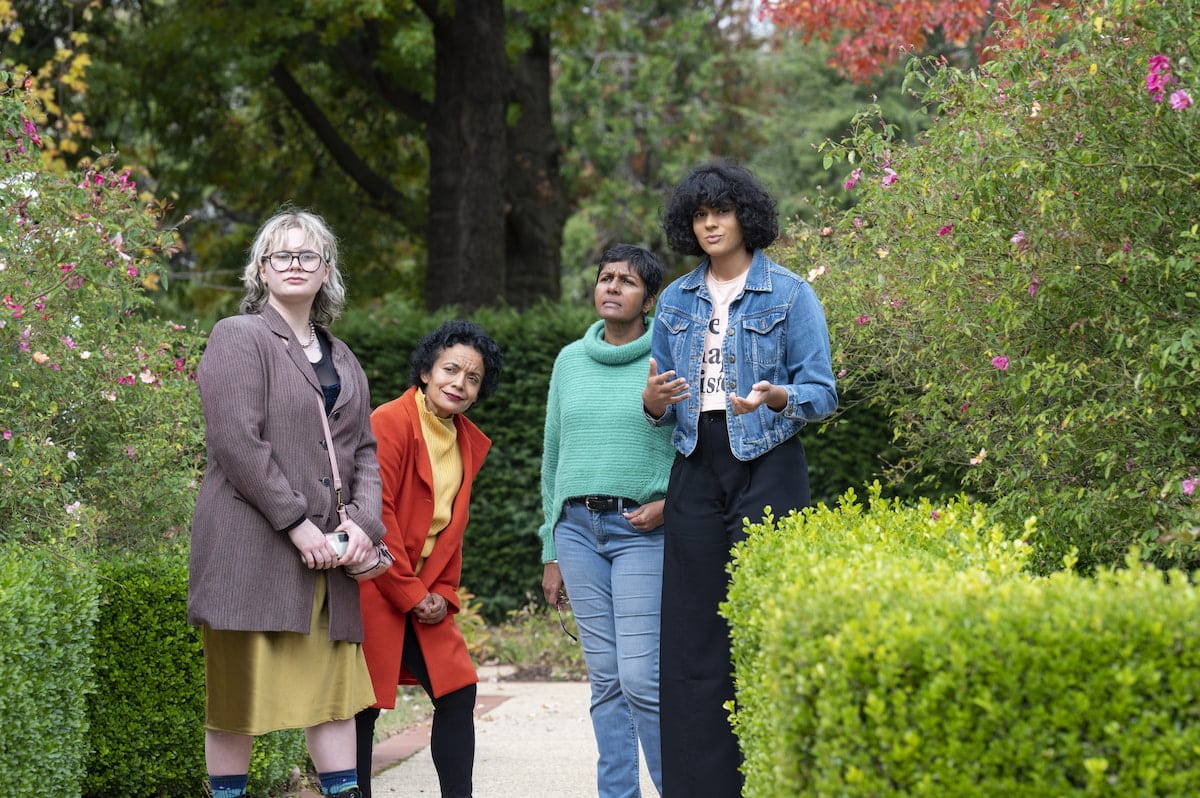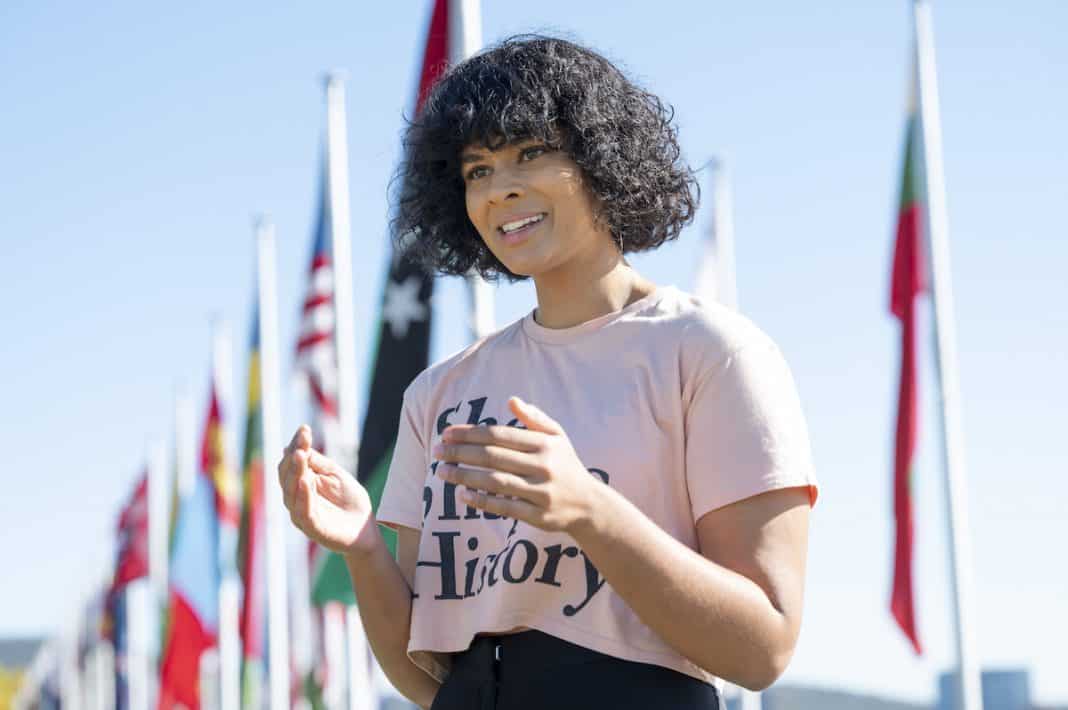Have you ever wandered around the historical monuments of Canberra and thought, “Where are all the women?”
That’s the question that led to Sita Sargeant founding She Shapes History, one of Canberra’s only walking tour businesses.
“Which is insane, because it’s the perfect city for it,” Sita told me when we met up by the King George statue, reassuring me that I would see how the capital is “such a walkable city”.
“Our whole aim with She Shapes History is to take you through this landscape that you think you know and show you there’s this hidden story: The story of Australian women.”
The tour takes place within the National Triangle, aka the Parliamentary Triangle, “the only place in Australia where all Australians can find representation,” says Sita.
“They find it politically in Parliament House, culturally in the Library and the galleries, historically in the Archives. And you’re meant to be able to find it in the monuments.
“[Canberra] was meant to be a meeting place, somewhere all Australians would be able to come and find themselves. But the stories that we tell about the city are not representative of who we are as a nation.”
She Shapes History was born in the pandemic. Sita, a born and raised Canberran, moved away from the ACT for uni. When the pandemic hit, and the young research assistant moved back home, she discovered “a blessing in disguise”.
“Canberra is not somewhere that I thought I would ever settle… I think people, especially Canberrans, forget that it’s got stories only a capital city would have. They’re Canberra stories, but they’re also Australian stories.”
By now, many Canberrans are already aware of the classic “behind every great man” story of the city’s design. Walter Burley Griffin’s name may have been on the design competition entry, but his wife Marion Mahony Griffin did all the illustrations, and much of the research, meaning the capital could very well have been designed by a woman.
However, as I soon learnt, there were many more history-shaping women of the capital, whose stories have been written in sand. Here is just one of them, as told by Sita.
Anne Neill: Canberra’s housewife spy
The oldest building in the National Triangle, East Block, is the location of Canberra’s first post office, pre-dating [Old] Parliament House by a couple of months.
Enter a green door that looks like it hides no more than an electricity substation, walk up the stairs, and you would have been standing in Australia’s federal spy agency’s very first office.
In the 1950s and ‘60s, ASIO’s best spy was a suburban housewife in her 50s named Anne Neill.
Anne lost her husband in WWII and became fiercely passionate about achieving peace.
Her new focus on intercountry connections landed her at an international peace conference, “and she’s looking around going, ‘this feels like communism’,” said Sita.
“So, she writes directly to the Attorney-General like, ‘Hey, I found you these communists. They’re spreading communist propaganda. What are you going to do about it?’”
The Attorney-General sent an ASIO agent directly to Anne’s home, who proceeded to recruit her.
For the next two decades, Anne slowly worked her way up in the communist party, with no one ever the wiser. “No one suspected the unassuming housewife.”
During the day, she would be a member of the communist parties and in the evening, Anne would do her real work for ASIO. In fact, Anne was so dedicated that when she was hospitalised with illness and her field agent was begging her to take a break, she famously responded, ‘Communists don’t take holidays, why should I?’
Anne became such a prominent player in the communist party, that ASIO sent her to Europe for an international peace conference, attended by key communist leaders. “It was the first time an ASIO agent was ever sent across enemy lines, and it was a woman in her 50s!” said Sita.
“The only reason she retired is because another ASIO plant, also a housewife in her 50s, reported Anne as suspicious, not knowing she was also a spy. That’s when she decided it was time – she was never found out by a member of the communist party.”
This glimpse into a time when ASIO was heavily reliant on women as field agents makes you wonder, how many friendly, unassuming, housewife spies were there?

“One of the things that I’ve been surprised by is how much learning the stories of Australian women has made me prouder of being an Australian,” said Sita.
Sita highlighted the importance of sharing stories like Anne’s in discussions of women’s issues today. “We always think it needs to be a serious conversation, and I genuinely think that shuts some people down.
“No one wants to feel like a villain. That’s why tourism is such an underrated avenue for communication. You’re not here to make people feel bad. You are here to entertain them.
“In the process, you can effect change. You’re seeing someone on a good day, they want to be there, they want to learn.
“Very few people are actually going to go and do a history degree,” said Sita. “This is a good way to get to those who might want to learn more about their country but would not otherwise take the time out of their day.”
Sita noted that often the tour is someone’s first experience of Australian history in decades. Being a queer woman of colour, she explained how her platform as a tour guide and being the entry point to Australian history for many customers is “something to be excited about.”
“We’re reclaiming history by telling these stories our way.”
Canberra Daily would love to hear from you about a story idea in the Canberra and surrounding region. Click here to submit a news tip.



